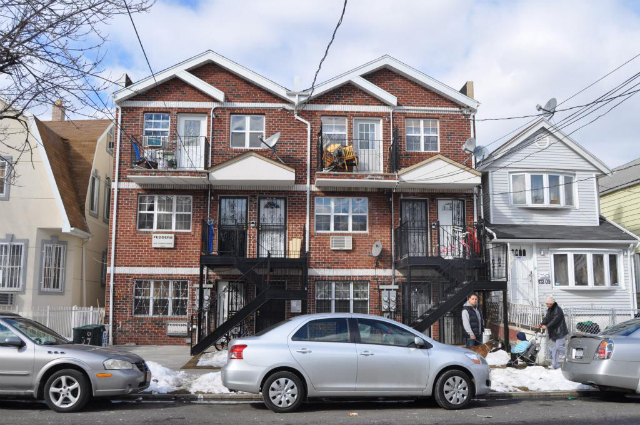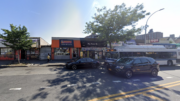During Mayor Bloomberg’s twelve years in office, his administration rezoned nearly 40 percent of the city. While the most prominent rezonings, in Manhattan and western Brooklyn and Queens, dramatically increased allowed densities, in the outer reaches of the outer boroughs, the aim was more often to freeze residential neighborhoods in their current state, in the name of preserving neighborhood character.
But as the city continues to grapple with its housing affordability crisis, it’s worth reflecting on what was lost: opportunities to incrementally grow the city’s stock of middle-class housing and provide a means for immigrant homeownership. By bowing to the NIMBY pressure exerted by local community boards – made up disproportionately by longtime white residents, increasingly out of touch with the immigrant influxes into the outer reaches of the outer boroughs – the city has made it more difficult for growing immigrant communities to gain a foothold in New York, and to make their mark on the city’s building stock.
“By downzoning, you’re limiting the construction, or the potential to construct, new housing,” said Tenzing Chadotsang of the Chhaya Community Development Corporation, a nonprofit that advocates for the needs of New Yorkers of South Asian descent. “With the shortage of housing in Queens, this is not the right strategy.”
The Jamaica Plan was typical of rezonings beyond the gentrifying fringe during the Bloomberg years. While allowed densities in core of downtown Jamaica were increased, the more residential neighborhoods around downtown were downzoned. (Typical of these rezonings, the amount of new housing actually created in the commercial core pales in comparison to the opportunities that were lost.)
In the years leading up to the rezoning and immediately after (when many builders still had permits that had been first filed before the zoning change), dozens of single-family homes were torn down and replaced by denser three-family buildings, in the area north and east of downtown Jamaica, within walking distance of the F train terminus at 179th Street and Hillside Avenue.
While it is difficult to find information about rents for these new apartments, which aren’t recorded with the city and aren’t generally listed on sites like StreetEasy, an analysis by YIMBY of property sales in the area suggests that the newly built, now-disallowed homes are generally affordable for middle-class working families, likely targeting the same (or lower) income bands as heavily subsidized projects closer to the core like Hunter’s Point South or Pacific Park (née Atlantic Yards).
Below, we’ve assembled a list of some of the new three-family structures built around downtown Jamaica, as a window into the sort of working-class housing that market-rate developers are willing, but generally no longer allowed, to build.
89-25 and 89-27 172nd Street
Sitting on a block consisting almost entirely of single-family homes built in the 1920s, these two small apartment buildings were constructed in 2006, a year before the 2007 rezoning. Together they have six units, tripling the number of families legally allowed to live on the lots. The buildings were last sold in 2008 to two different owners for $630,000 and $675,000, or under $250 a square foot – substantially cheaper than many prewar three-family brownstones with fewer amenities in trendier parts of Brooklyn and Queens.
Combined, the two buildings have a bit over 5,000 square feet of floor space, for an average unit size of 837 square feet – fairly small for these types of projects, but still big enough for small families. The single-family home next door is 1,400 square feet, but a housing violation on file shows that it was at one point illegally converted into a two-family home, like many buildings in immigrant outer borough neighborhoods.
The new owners have surnames that suggest they’re of South Asian descent, not the lily white names normally associated with new construction in the city.
90th Avenue, between 172nd and 175th Streets
Just around the corner, this stretch of 90th Avenue experienced a lot of development activity around the time of the rezoning, including 172-07 90th Avenue. This handsome six-unit building (technically two structures, Nos. 172-07 and 172-07A) is 6,480 square feet in size, providing more spacious apartments than the previous example. It was built in 2008, with a permit filed 2007, just before the rezoning took effect. The buildings were last sold in 2012 for just $223 a square foot, again to New Yorkers of apparent South Asian descent.
Just down the block, 172-31 90th Avenue and its neighbor at No. 172-33 have six units spread out over 7,560 square feet. Ironically, this comes to an average unit size even slightly larger than a 1,250-square foot single-family home just across the street, showing that new growth doesn’t necessarily have to come at the expense of family-sized units. No. 172-31 sold for $226 a square foot in 2008.
Along these blocks it is difficult to claim that the new three-story buildings are “out of context” with the rest of the neighborhood – across the street is a 28-unit new law tenement built in 1924. In fact, this area is littered with these dense, tenement-scale buildings, erected in the 1920s through ’60s, and would likely be even thicker with them if not for the imposition of the 1961 zoning code.
Most of the development activity just before the rezoning was centered around these blocks, but streets with essentially the same market dynamics stretch even further to the east. Given enough time, one could expect that similar developments would have continued to replace these single-family homes, adding a significant amount of new middle-class housing and relieving the extreme crowding pressure that immigrant families in New York face.
The multi-family buildings are more expensive on an absolute basis than neighboring single-family homes, but can be comparably priced on a per-square foot basis. And the added income from rental apartments helps make ownership possible.
By eliminating the possibility of creating small-scale multi-family housing, the city also eliminated a key mechanism for new immigrants to secure an important source of income and thus a potential path to homeownership. Tenzing Chadotsang of Chhaya notes that many single-family homes are in foreclosure as purchasers, often immigrants of South Asian descent, were under the false impression that they could rent out the basement for additional income.
“There are a lot of foreclosures happening in single-family neighborhoods when the owners can’t legally get that added value of a rental property,” Chadotsang said.
Subscribe to YIMBY’s daily e-mail
Follow YIMBYgram for real-time photo updates
Like YIMBY on Facebook
Follow YIMBY’s Twitter for the latest in YIMBYnews





